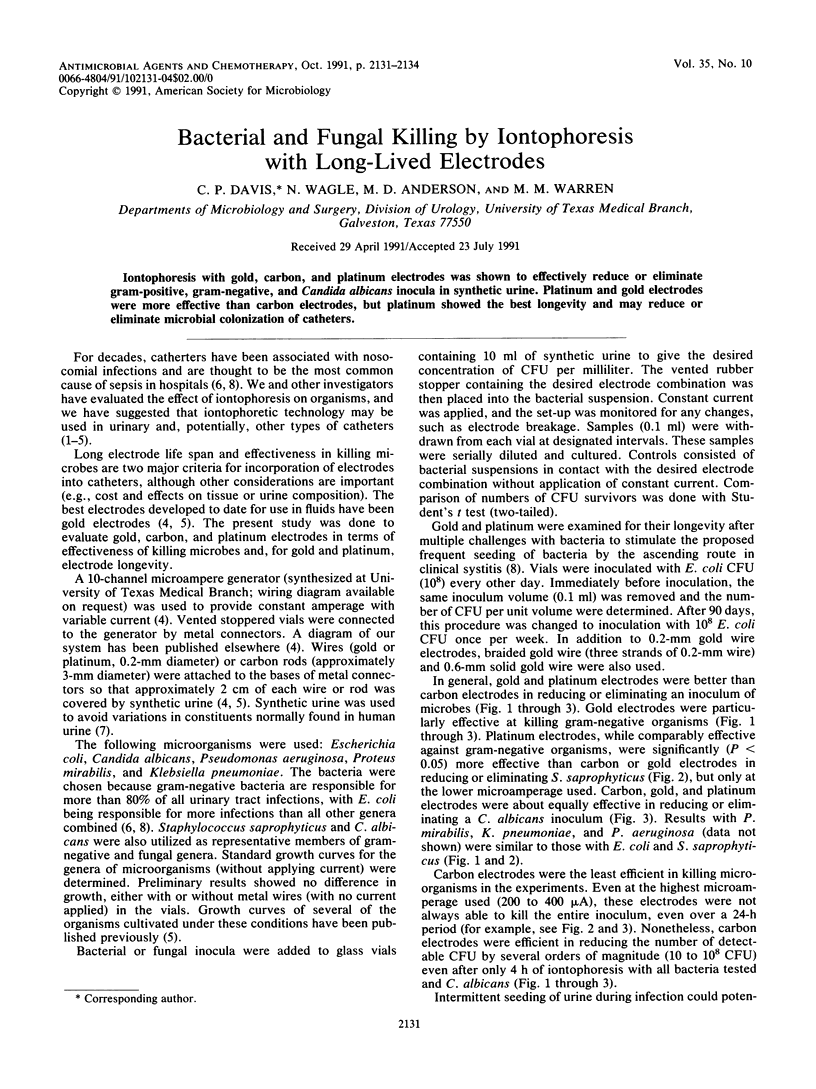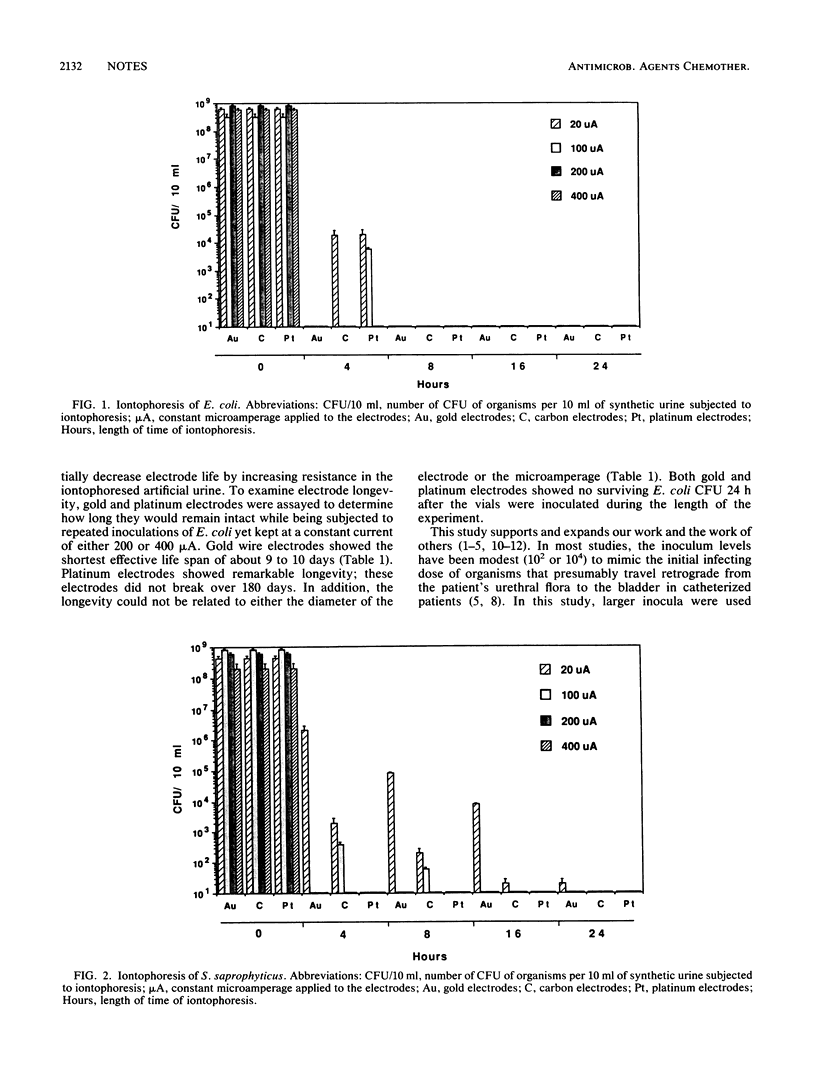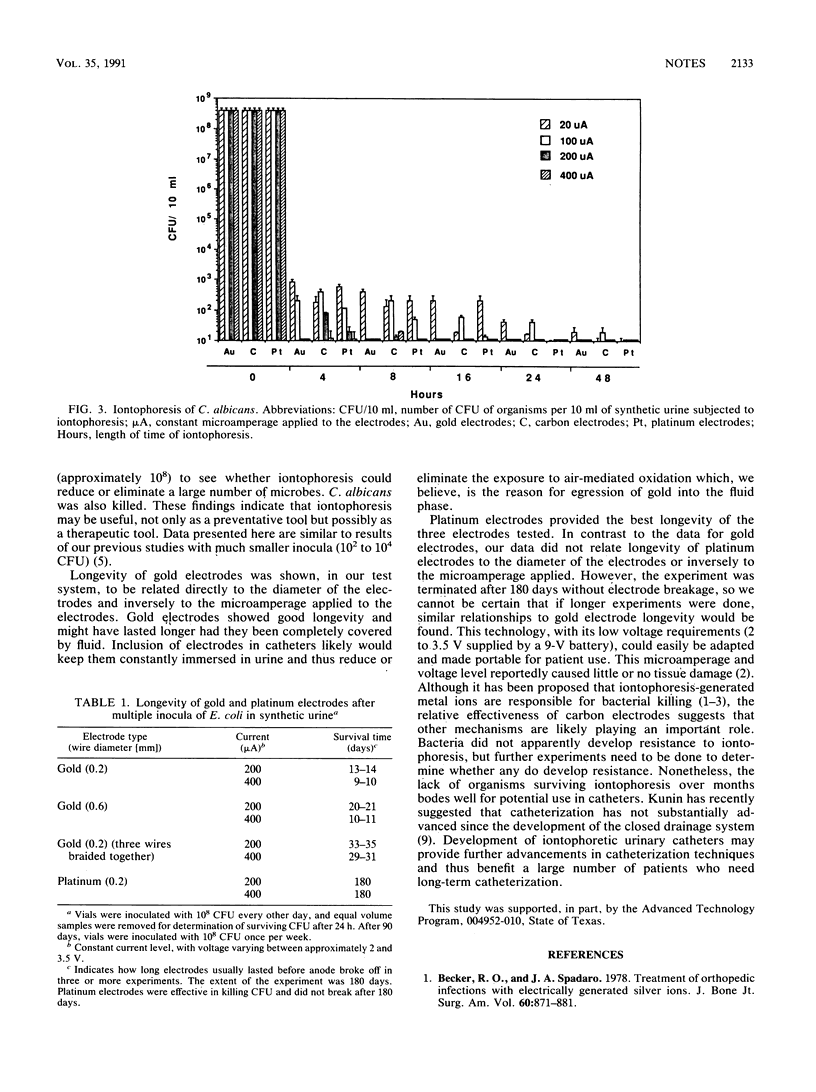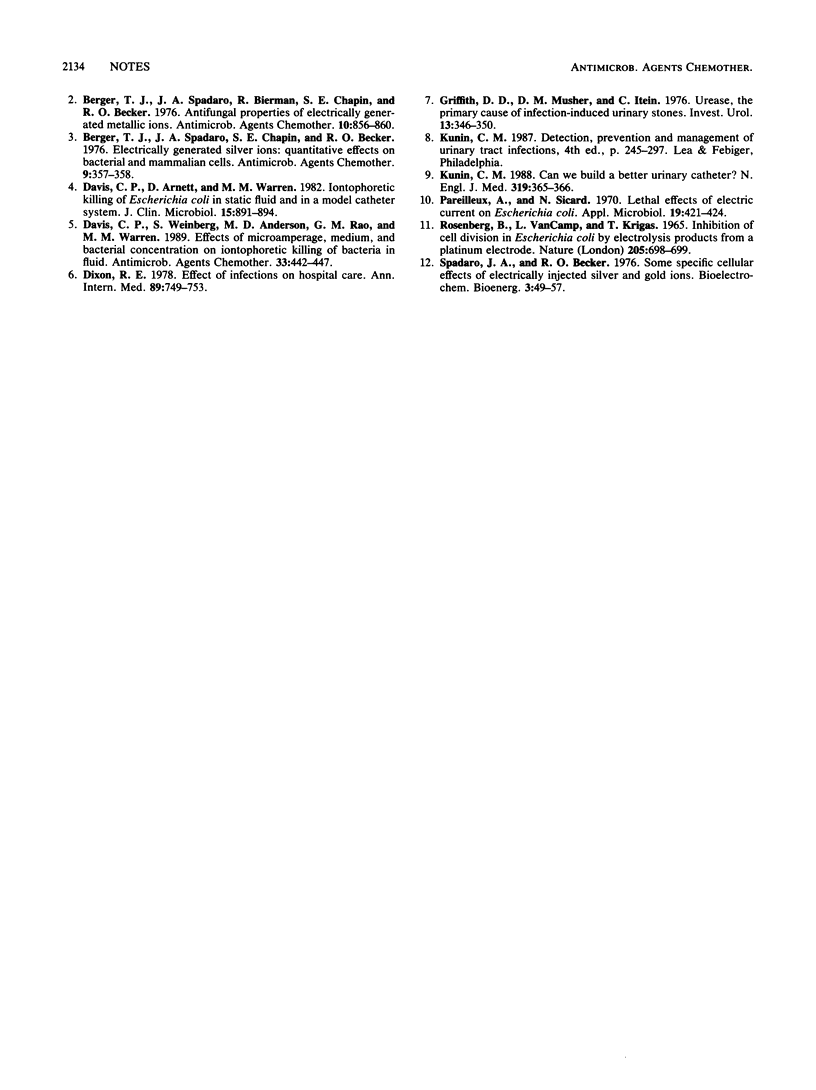Abstract
Iontophoresis with gold, carbon, and platinum electrodes was shown to effectively reduce or eliminate gram-positive, gram-negative, and Candida albicans inocula in synthetic urine. Platinum and gold electrodes were more effective than carbon electrodes, but platinum showed the best longevity and may reduce or eliminate microbial colonization of catheters.
Full text
PDF



Selected References
These references are in PubMed. This may not be the complete list of references from this article.
- Becker R. O., Spadaro J. A. Treatment of orthopaedic infections with electrically generated silver ions. A preliminary report. J Bone Joint Surg Am. 1978 Oct;60(7):871–881. [PubMed] [Google Scholar]
- Berger T. J., Spadaro J. A., Bierman R., Chapin S. E., Becker R. O. Antifungal properties of electrically generated metallic ions. Antimicrob Agents Chemother. 1976 Nov;10(5):856–860. doi: 10.1128/aac.10.5.856. [DOI] [PMC free article] [PubMed] [Google Scholar]
- Berger T. J., Spadaro J. A., Chapin S. E., Becker R. O. Electrically generated silver ions: quantitative effects on bacterial and mammalian cells. Antimicrob Agents Chemother. 1976 Feb;9(2):357–358. doi: 10.1128/aac.9.2.357. [DOI] [PMC free article] [PubMed] [Google Scholar]
- Davis C. P., Arnett D., Warren M. M. Iontophoretic killing of Escherichia coli in static fluid and in a model catheter system. J Clin Microbiol. 1982 May;15(5):891–894. doi: 10.1128/jcm.15.5.891-894.1982. [DOI] [PMC free article] [PubMed] [Google Scholar]
- Davis C. P., Weinberg S., Anderson M. D., Rao G. M., Warren M. M. Effects of microamperage, medium, and bacterial concentration on iontophoretic killing of bacteria in fluid. Antimicrob Agents Chemother. 1989 Apr;33(4):442–447. doi: 10.1128/aac.33.4.442. [DOI] [PMC free article] [PubMed] [Google Scholar]
- Dixon R. E. Effect of infections on hospital care. Ann Intern Med. 1978 Nov;89(5 Pt 2 Suppl):749–753. doi: 10.7326/0003-4819-89-5-749. [DOI] [PubMed] [Google Scholar]
- Griffith D. P., Musher D. M., Itin C. Urease. The primary cause of infection-induced urinary stones. Invest Urol. 1976 Mar;13(5):346–350. [PubMed] [Google Scholar]
- Kunin C. M. Can we build a better urinary catheter? N Engl J Med. 1988 Aug 11;319(6):365–366. doi: 10.1056/NEJM198808113190609. [DOI] [PubMed] [Google Scholar]
- Pareilleux A., Sicard N. Lethal effects of electric current on Escherichia coli. Appl Microbiol. 1970 Mar;19(3):421–424. doi: 10.1128/am.19.3.421-424.1970. [DOI] [PMC free article] [PubMed] [Google Scholar]
- ROSENBERG B., VANCAMP L., KRIGAS T. INHIBITION OF CELL DIVISION IN ESCHERICHIA COLI BY ELECTROLYSIS PRODUCTS FROM A PLATINUM ELECTRODE. Nature. 1965 Feb 13;205:698–699. doi: 10.1038/205698a0. [DOI] [PubMed] [Google Scholar]


